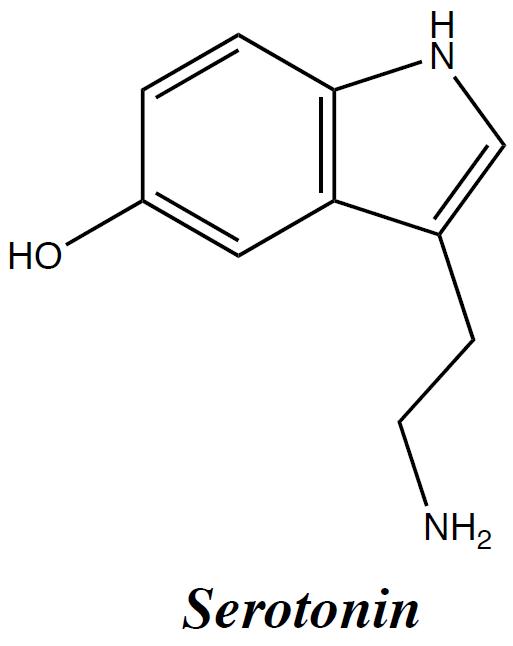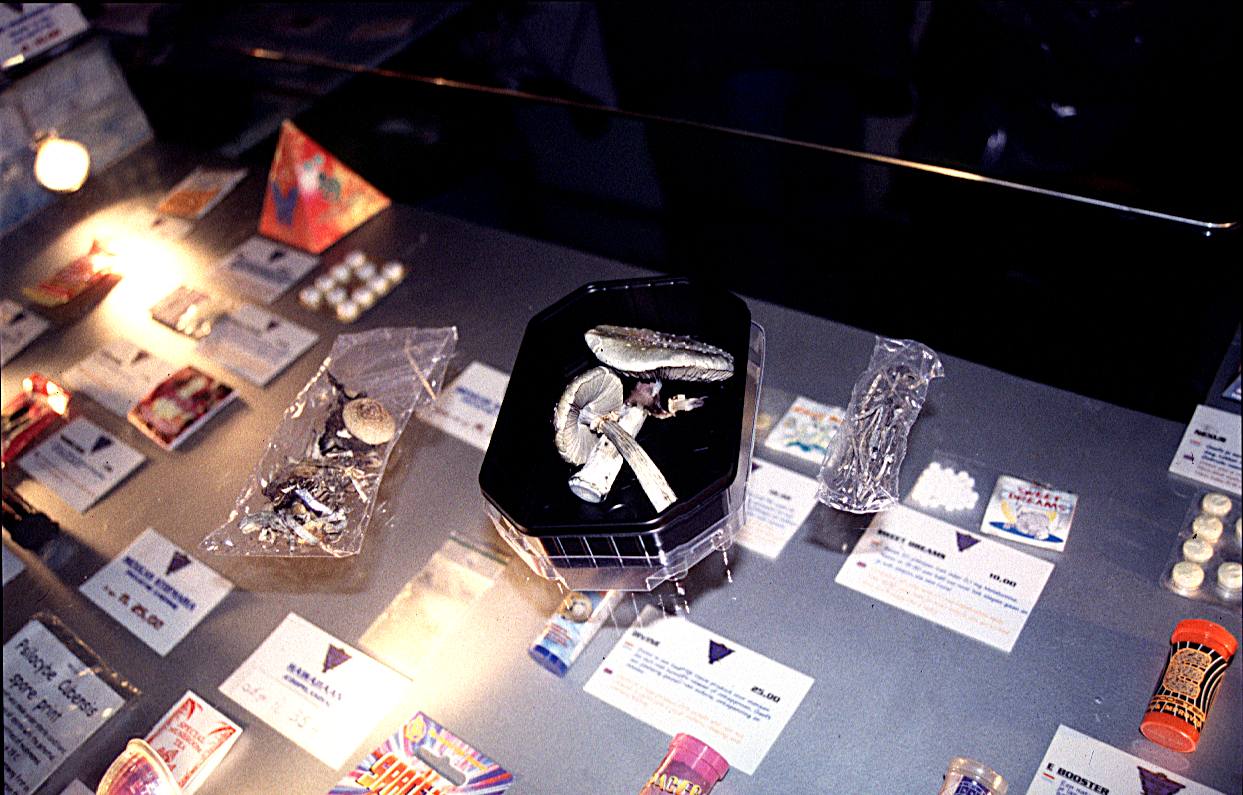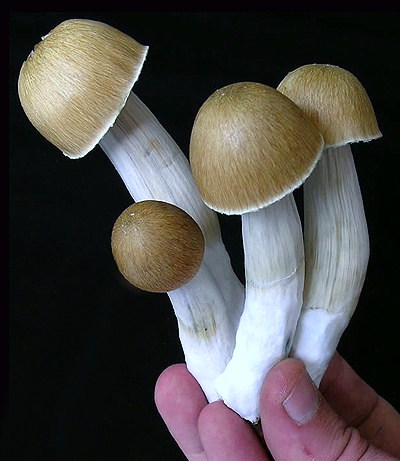Pharmacology-
Pharmacology is the scientific study of drugs including their origin, composition, pharmacokinetics, therapeutic use, and toxicology (Merriam-Webster). This branch of science is a synthesis biology and chemistry, and it plays a crucial role in the world of medicine.

The image
above gives a molecular composition of Psilocybin and
Psilocin. Psilocybin, which is the primary psychoactive chemical in P.
cubensis. doesn't actually act as a psychedelic agent in the body until
it is metabolized into Psilocin, a compound that is extremely similar to
Serotonin (lower right).
 The human body naturally produces the Serotonin
hormone, and it regulates mood, emotion, sleep, and appetite (Schloss et
al.). Since Psilocin is so similar to Serotonin on a structural standpoint,
it's able to act on the body in a similar to Serotonin by acting on the same
receptors when acting as a neurotransmitter (Stafford). The metabolism of
Psilocybin is similar to that of LSD and LSA (Chang et al.). Follow the
LSD
and
LSA links to view web pages that were done by some of my peers.
The human body naturally produces the Serotonin
hormone, and it regulates mood, emotion, sleep, and appetite (Schloss et
al.). Since Psilocin is so similar to Serotonin on a structural standpoint,
it's able to act on the body in a similar to Serotonin by acting on the same
receptors when acting as a neurotransmitter (Stafford). The metabolism of
Psilocybin is similar to that of LSD and LSA (Chang et al.). Follow the
LSD
and
LSA links to view web pages that were done by some of my peers.
Psilocybin holds a great deal of potential in it's medical uses. A study
done on cancer patients at Harbor-UCLA Medical center have showed
an
increase in mental wellness by reducing anxiety. Patients were given doses
while remaining in bed and were monitored throughout the sessions. During
this time, the patients experienced a spectrum of emotions ranging from
elation to sadness. This release of emotions provided the patients with a
"spiritual, mystical [experience] where they feel at peace, at one with what
they feel is sacred," said Dr. George Greer of the Heffter Institute
(Uyttebrouk).
Along with LSD and Marijuana, Psilocybin has also provided positive results when used as an alternative medicine in treating headaches. A study was conducted using 53 cluster headache patients and were treated with either LSD or Psilocybin. When treated with Psilocybin, 22 out of 26 patients reported that their headaches were aborted by the drug (Sun-Edelstein et al.). Researchers are studying to further explain the mode of action behind these findings. However, with the possibility of more positive results arriving in the future, it's possible that Psilocybin-containing drugs may introduced as a natural alternative to headaches in the future!
 Historically,
P. cubensis was used in religious ceremonies and was especially
popular among Native American civilizations in Central America. The Aztecs,
for instance, called P. cubensis mushrooms teonanacatl,
which translates to "divine flesh" (Spinella).
Historically,
P. cubensis was used in religious ceremonies and was especially
popular among Native American civilizations in Central America. The Aztecs,
for instance, called P. cubensis mushrooms teonanacatl,
which translates to "divine flesh" (Spinella).
 When ingested, the effects of Psilocybin will be felt
after 30-60 minutes. The experience peaks around 2 hours and is followed by
a steady decline for the next 3-4 hours (Stafford). The effects of
Psilocybin are described as:
When ingested, the effects of Psilocybin will be felt
after 30-60 minutes. The experience peaks around 2 hours and is followed by
a steady decline for the next 3-4 hours (Stafford). The effects of
Psilocybin are described as:
-yawning
-physical disorientation (initially, but wear off)
-weightlessness, or a floating sensation
-colorful visual effects
-unusual auditory effects
-emotions of happiness and euphoria (however, emotions of depression do occur).
Similar to Marijuana, Psilocybin tends to stay in the body's fatty tissues for a longer duration than drugs like alcohol or nicotine (follow the link if you wish to read about Medical Marijuana web page done my a classmate of mine). A study showed that up to 20% can remain in human fat cells up to a week after ingestion (Stafford). On the positive side, Psilocybin has a low toxicity, meaning it's difficult to overdose on it, unlike alcohol and many prescription medicines. Peyote, a cactus, contains a psychoactive drug that is often associated with the ones being discussed. Follow the link to read about this organism that can also be found on MultipleOrganisms.net. Also, another medicinal mushroom that is being done by a classmate is Ganoderma lucidum. It's been used for anti-aging properties.
Why then, are drugs like Psilocybin, LSD, and Cannabis demonized? Among other reasons, the answer can be found by taking a look back in history. During the 1960's counter-culture movement drugs like these became popular. In order to suppress the hippie movement, both the government and the media portrayed the drugs and behaviors of the hippies as dangerous and immoral. There are many other example of the government and media tagging drugs on minority groups such as drugs like opium and cocaine.
To learn about the habitat that P. cubensis thrives in, click next.